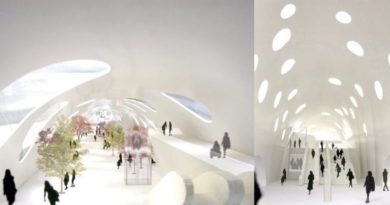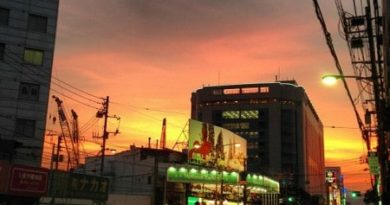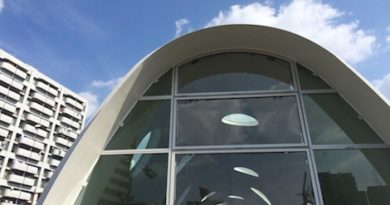Seeking Space – Overcrowding Issues at Japan’s Top Destinations
As a traveler, being amongst a crowd at popular destinations is my least favorite time of day. I’ve given up on travel plans when I’ve arrived at mid-day at Chinatown, Yokohama, mid-morning in Asakusa, Tokyo or early afternoon along Miyajima’s Shotengai shopping street. Even the thought of a daytrip to Kyoto for a conference, research project or god-forbid to go to enjoy the traditional cuisine and historic charm of the place fills me with dread. Not just for battling the crowds, but for the unwelcome looks any person who looks like an international traveler is likely to receive in that overwhelmed city.
I have great sympathy for the locals in these popular destinations around Japan as I grew up on Oahu. The recent sentiment coming from news of Kyoto’s overcrowding issue, however, to segregate visitors or ban them altogether from popular destinations is ill-advised. I’d like to lay out some of the issues as I see them with some proactive ideas for positive change which should restore more of a balance between the needs of local residents and inbound tourists. An overall goal to strive for sustainable tourism development which balances the needs of society, the environment as well as profitability will secure more success in the long term.
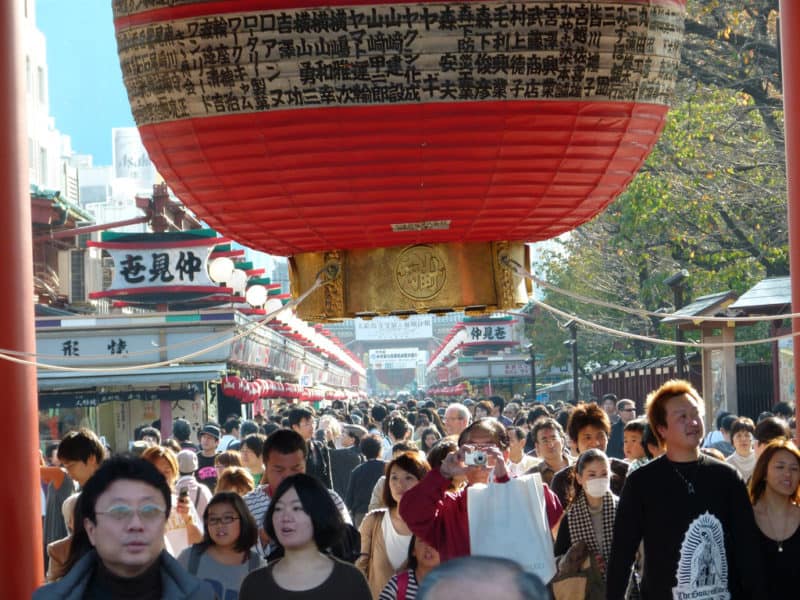 This recent Asahi newspaper article points out the growing problems in Kyoto with the recent tourism boom. These issues can easily be applied to Hiroshima among other areas of Japan where local residents have become more and more dissatisfied with their lessened quality of life as the number of international tourists increase. This condition of overcrowding is an issue of sustainability and the need to find balance between the needs of locals (people) to retain a decent quality of life, while protecting local resources and waste issues (the environment) when striving to increase tourist numbers to boost income for the economy (profits). Maintaining a high level of Omotenashi hospitality depends on allowing local residents to maintain a decent quality of life.
This recent Asahi newspaper article points out the growing problems in Kyoto with the recent tourism boom. These issues can easily be applied to Hiroshima among other areas of Japan where local residents have become more and more dissatisfied with their lessened quality of life as the number of international tourists increase. This condition of overcrowding is an issue of sustainability and the need to find balance between the needs of locals (people) to retain a decent quality of life, while protecting local resources and waste issues (the environment) when striving to increase tourist numbers to boost income for the economy (profits). Maintaining a high level of Omotenashi hospitality depends on allowing local residents to maintain a decent quality of life.
These issues are as of yet not as severe in Hiroshima, but we are certainly seeing symptoms of the same problem in its early stages at our most popular tourism attractions, particularly the Hiroshima Peace Memorial Museum (HPMM) and Miyajima island. Overall, there are adjustments that need to be made in terms of managing carrying capacity, or more simply, how many people can be allowed in to maximize profits at a destination or attraction without compromising the quality of satisfying visit or quality of daily life for local people.
It’s not easy, managing this problem of carrying capacity will require some planning innovation as well as some heavy lifting in terms of creating and enforcing new local guidelines. But making difficult changes now can will ensure more success in the long-term which should be everyone’s goal. These changes are essential in order to not only protect the quality of life of local people, while maintaining a pristine environment, but also to enhance the quality of experience for visitors.
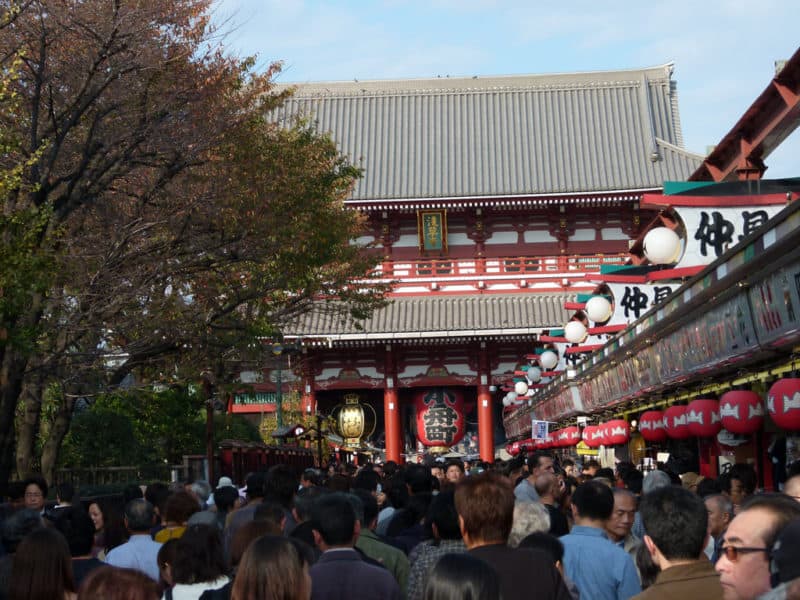 Staggering Solutions for Overcrowding
Staggering Solutions for Overcrowding
Kyoto is suffering from extreme overcrowding due to international tourism, but is also reaping the economic rewards. The Asahi article states that the city had 56.84 million visitors in 2015 and spending increased 30% from the previous year. Despite this economic success for businesses and the local economy, it is unlikely that local people are personally feeling the benefit from this economic success.
The article detailed problems such as local community events being cancelled due to fear of being overwhelmed by hordes of visitors, residents disturbed by the many sudden strangers staying in their local neighborhoods (as many new minpaku lodges suddenly appear in previously abandoned homes). Roads are clogged with tour buses, sightseer-filled sidewalks are impossible to use and the local sights, facilities and attractions locals hold dear are overwhelmed with people who lack manners and the proper levels of appreciation. Residents feel current conditions are unbearable.
I understand the sentiment having grown up in Hawaii where “Locals Only” has long been a popular catch-phrase. This is certainly not a unique problem for Kyoto or Japan as a tourist destination suffering overcrowding, but it is quite a new problem which is escalating quickly as the government continues its hugely successful campaign inviting more and more international visitors. Every article I read on this issue pinpoints the need for open-dialogue between local residents and city officials who are making policy. It is not efficient or effective to make new policy based solely on a few complaints, or business interests, without first surveying local population needs and ideas on the issue in more general terms.
It’s a daunting problem, but best to think of each issue at a time. The following are some of my ideas based on research in sustainable tourism as well as personal experiences as a traveler myself to many crowded destinations around the world. I hope somewhat useful or interesting to others considering these issues.
- Peak Times (10-4) Foot-Cycle-Electric only
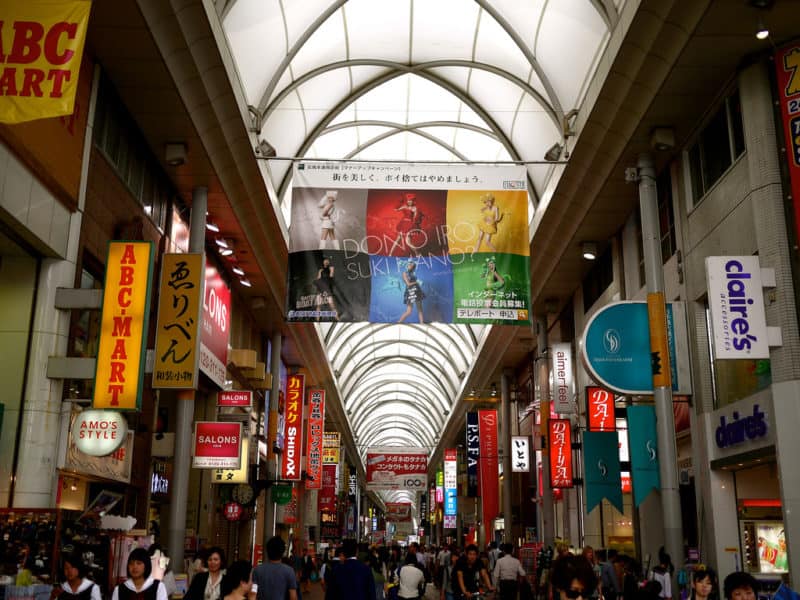 One straightforward method to deal with overcrowding is to stagger visitor arrivals via the companies that drop them on a location in bulk. Tour buses and other non-local vehicles which clog up local roads need to be restricted to certain off-peak times. An extreme, but effective solution would be to bar all vehicles from the streets in front of the most popular destinations between the peak times of 10-4 everyday of the week. This would spread out visitors and local foot or bicycle traffic naturally, enhance the local atmosphere by decreasing noise and air pollution, while making it more enjoyable to walk or rent a cycle to enjoy the charming, traditional city. Electric taxis, buses and emergency vehicles could still be allowed on the roads at this time if deemed essential. Some regulation and infrastructure changes are needed to encourage this change, but similar initiatives have had success in many cities worldwide. It seems like a big, frustrating change at first but soon locals, businesses and travelers start to see the benefits and appreciate greater ease of movement.
One straightforward method to deal with overcrowding is to stagger visitor arrivals via the companies that drop them on a location in bulk. Tour buses and other non-local vehicles which clog up local roads need to be restricted to certain off-peak times. An extreme, but effective solution would be to bar all vehicles from the streets in front of the most popular destinations between the peak times of 10-4 everyday of the week. This would spread out visitors and local foot or bicycle traffic naturally, enhance the local atmosphere by decreasing noise and air pollution, while making it more enjoyable to walk or rent a cycle to enjoy the charming, traditional city. Electric taxis, buses and emergency vehicles could still be allowed on the roads at this time if deemed essential. Some regulation and infrastructure changes are needed to encourage this change, but similar initiatives have had success in many cities worldwide. It seems like a big, frustrating change at first but soon locals, businesses and travelers start to see the benefits and appreciate greater ease of movement.
- Earlier/Later opening times
An essential element of staggering crowds is to have earlier opening times. Around the station to slow crowds and increase sales potentials, shops, cafes and eateries should be opening as early as the first arrivals (around 8am). To accommodate tour bus customers who prefer to be dropped at locations instead of using public transport, cycle or walk, the main attractions, shops and restaurants that want to attract this tourist trade should open earlier in the day. A recent visit to the temple haven of Kamakura highlighted the need for earlier opening times to ease visitor congestion throughout the day and to pass on a sense of peace and tranquility so charming about these spiritual attractions. In the hot summer months opening earlier makes sense as June to September also coincides with peak international travel. If gates would open at 8am instead of 10am it would attract more early visits by early-rising older travelers who appreciate the quiet, calm morning hours. Staying open later in the evening after sunset to offer visits in subtle lighting would also be attractive and appeal more to couples looking for romance. Opening times is not an issue on Miyajima as much as visitors can go as early and stay as late as the ferries allow. Visitors do, however, complain of the short opening-hours of the HPMM. Opening an hour earlier and staying open an hour later may significantly decrease overcrowding issues.
- Maintain total capacity limits during peak times
During peak hours, the total number of visitors allowed in any one enclosed space needs to be regulated in a logical way- just like maximum capacity of an elevator. This is an important element of safety as well as allowing for enjoyment and appreciation of the experience. A common complaint of visitors to Hiroshima’s Peace Park Museum, especially during renovation, is that it is “too busy” and “too hot”. The content of a visit to HPMM is a powerful experience, so being allowed time and space to absorb it all is especially important. Kyoto’s key attractions, where visitors should be filled with a sense of peace and appreciation of nature, similarly requires space. Kyoto’s “power spots” are rich with cultural, historical and religious significance but standing amid a bustling crowd makes it impossible to appreciate. Sustainable tourism carrying capacity theory advises destination planners to consider at least 1 meter per person- a straightforward math equation.
- Higher taxes & Entry Fees
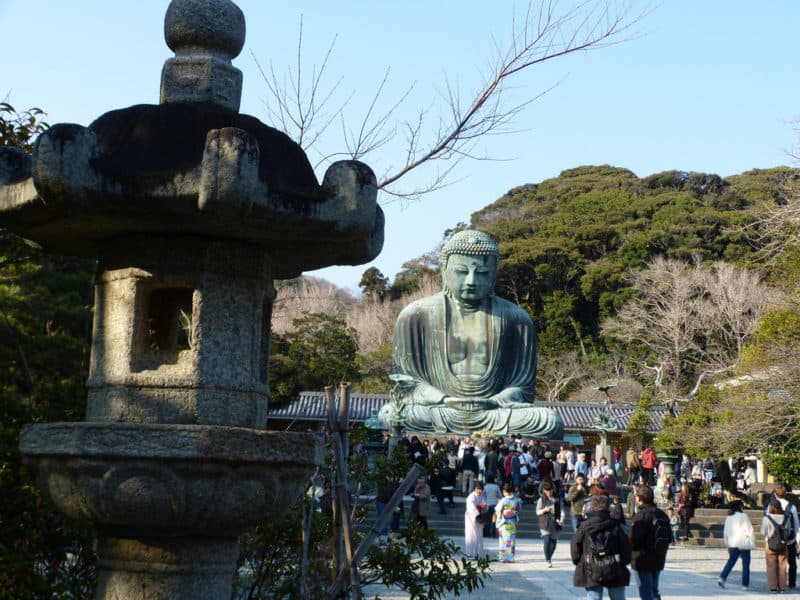 No one likes to pay tax or entry fees, but without these payments local residents are unfairly bearing the burden of infrastructure and facility management without gaining any benefits. So, one way to even the playing field is to charge non-local visitors entry fees and charge outside companies profiting from popular destinations higher taxes. Local tourism officials need to have an open-dialogue with community groups to find ways to use the tax money to support local communities by upgrading and improving buildings and infrastructure among other initiatives.
No one likes to pay tax or entry fees, but without these payments local residents are unfairly bearing the burden of infrastructure and facility management without gaining any benefits. So, one way to even the playing field is to charge non-local visitors entry fees and charge outside companies profiting from popular destinations higher taxes. Local tourism officials need to have an open-dialogue with community groups to find ways to use the tax money to support local communities by upgrading and improving buildings and infrastructure among other initiatives.
If locals are happier and can clearly see the benefits of tourism, the quality of the visitors experience will also increase. One of the examples in the Asahi article was when a cherished local Kyoto community event was cancelled due to local organizers feeling overwhelmed by the potential hordes of visitors. If, however, carrying capacity limits were enforced to the event and visitors were charged an entry fee to join the flower-viewing event, then security and clean-up crews would be funded to help support the local community members making the event a success. Concerts and other popular events similarly sell-out due to capacity limits. Charging and capacity limits should be applied to any overcrowded attraction or event to preserve its integrity and safety while funding preservation.
Miyajima island residents have also been considering charging an entry fee which could help fund structural support of its traditional buildings and upgrade its infrastructure. This would not only help improve the quality of locals’ lives and businesses, but further enhance the visitor experience.
A city official in the Asahi article discussed the issue of appealing to wealthier customers in Kyoto as a way to maintain the branding of Kyoto as a destination of high-calibre while improving the quality of living. Certainly, this has a strong bias against budget travelers who have a bad reputation of using and abusing local destinations without adding much to the economy or showing the proper level of interest or appreciation for the destination. This is not necessarily because the visitors are rich or traveling on a shoestring. If overwhelmed destinations and accommodation in Kyoto, however, charged higher rates/taxes for visitors who stayed only 1 night, it may help fund local conservation efforts while attracting the “right kind of visitor” and curbing the most wasteful and exploitative fast-travel tourism habits.
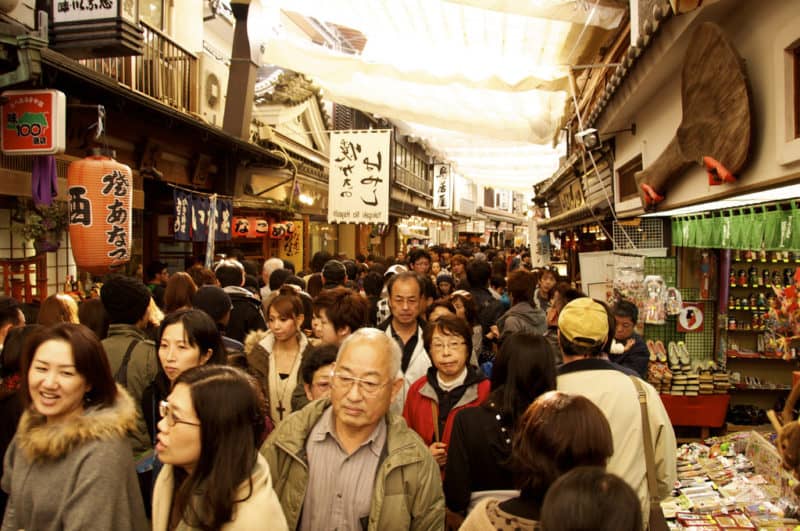 Curbing day-tripper quick trips to popular spots is a difficult problem for many destinations across Japan as the Japan rail passes encourage fast and furious visits along the Shinkansen routes. Therefore, finding ways to improve the tourism infrastructure which also make it more difficult to steam in and out of overcrowded destinations like Kyoto, by using methods suggested above, may be a soft-power method of discouraging these habits. Kyoto is one destination that does not need and should not welcome the exploitation of its sites by mass transit companies such as tour buses. Regulation against polluting transport during key times could have many positive knock-on effects.
Curbing day-tripper quick trips to popular spots is a difficult problem for many destinations across Japan as the Japan rail passes encourage fast and furious visits along the Shinkansen routes. Therefore, finding ways to improve the tourism infrastructure which also make it more difficult to steam in and out of overcrowded destinations like Kyoto, by using methods suggested above, may be a soft-power method of discouraging these habits. Kyoto is one destination that does not need and should not welcome the exploitation of its sites by mass transit companies such as tour buses. Regulation against polluting transport during key times could have many positive knock-on effects.
- Minimum stays
As mentioned above, the biggest annoyances and damage to the environment and local community is typically caused by day-trippers and overnighters. Therefore, a Kyoto-city regulation of a luxury tax added to single stays at hotels and other lodging, or instituting a total ban of anything less than a four-night minimum stay for international travelers at Minpaku such as AirBnB may be effective. Any accommodation regulation such as this is likely to meet resistance, but will benefit the lodging businesses and local restaurants, shops and residents as well as enhancing the visitor’s experience. To protect the hotel businesses which pay higher taxes and are under stricter quality control (such as fire-safety regulations) than Minpaku lodging, creating a stricter minimum booking system for the latter makes sense. Amsterdam employs a similar policy which restricts short stays to hotels and enforces stays of no less than 7 nights in any residential home type rentals (typical of Minpaku).
- Staggering visitors & encouraging shopping and a deeper understanding along the way
I remember being annoyed on recent visits to New York’s Empire State building and Seattle’s Space Needle that we were slowed from getting to the coveted views at the top by historical exhibits, gift shop items and a slow elevator line. Then it dawned on me how clever these delays were in staggering the flow of visitors to the attraction while adding chances for increased income and a deeper visitor experience. As we refer back to the complaints of visitors to Hiroshima’s Peace memorial museum who wanted the space and time to take in the powerful exhibits, we realize there is a need to change the design of the line in order to improve the flow and experience. If the ticket entrance, for example, were on the basement floor and people were first encouraged to go through the special, temporary exhibits and bookstore before the main exhibit, it would be better. I’ve talked with many visitors who were unaware of the extra exhibit areas or opportunities to listen to survivor’s testimonies. Staggered entry is essential in the battle against overcrowding. If carrying capacity were measured for the facility based on the 1 meter per person metric and applied to how quickly people were allowed entry, it would stagger visitors and significantly improve the overall value and understanding of a visit. Extended opening hours at the HPMM, temples in Kyoto and other key destinations across Japan is an important element of staggering visitors which offers the incentive of a more relaxing, cooler temperature visit.
Proactively move forward, don’t give up
To any stakeholders looking for solutions to overcrowding in your hometown or destination, I’d encourage you not to give up and bar the door against international visitors. Instead, let’s think of solutions possible through incremental changes, such as those suggested above, that can be applied to each problem. The overall aim of tourism planning needs to protect the rights of local residents to a high-quality life, while acting as stewards of the local environment, during the process of catering to the needs of international visitors to enhance the economy. As long as planning is making improvements toward this aim, tourist destinations across the country can achieve long-term success and a better sense of balance between locals and visitors.
I’m sure many of you also have wonderful ideas for how to improve tourism at overcrowded destinations in Japan, I look forward to responding to your suggestions and ideas in the comments section below.



